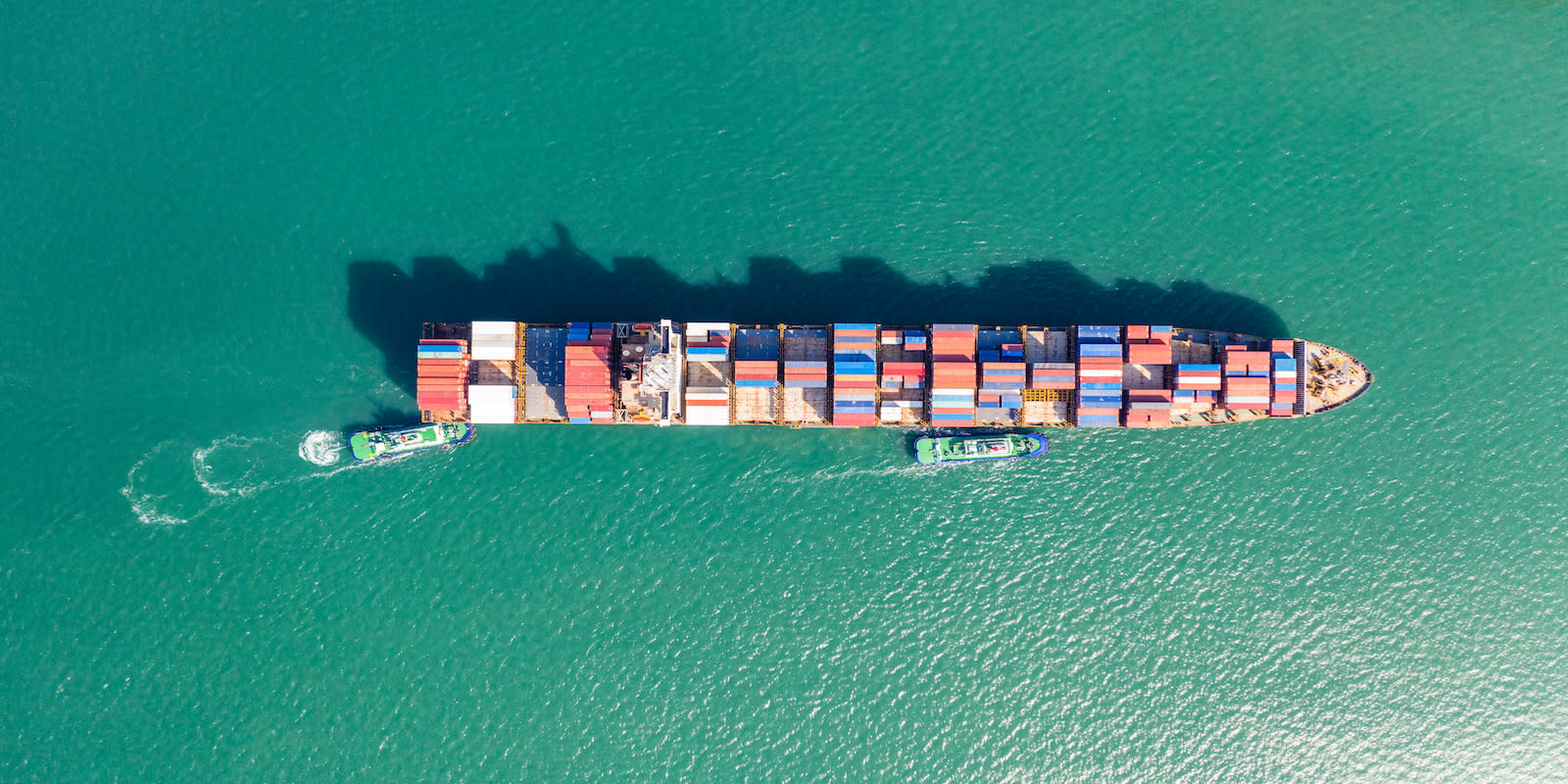
July 11, 2022
How Cargo Insurance Can Prepare You For Evolving Supply Chain Risks
Tags:
Supply chain has always been an industry that demands resilience—but over the past few years, the usual volatility has amplified. Logistics seems riskier, even when major incidents in 2022 are down compared to the past two years. It’s not just the pandemic, either.
It’s that the world’s systems can’t keep up with demand. Factories struggle to satisfy years of explosive consumer demand. Ships aren’t big enough or fast enough to accommodate the resulting logistics demand. Inland, trucks and warehouses grind to prevent container bottlenecks.
The upshot of all this congestion is that risk exposure is heightened. Risk exposure is more than the probability of loss. It’s about the value of those losses as they occur.
There are so many unavoidable and unpredictable incidents that can occur in one’s supply chain. Cargo loss is more common than you think with the increase in the size of container ships, longer transit times, human error, unpredictable weather conditions, cyber threats, political and piracy threats, and machinery breakdown. In Q4 of 2020 alone, two cargo ships experienced heavy weather and lost nearly 1,900 containers. In 2018-2019 there were 425 ship fires that contributed to cargo loss and damage.
The issue isn’t how often it happens, it’s the financial impact of that event. For example if your entire season of goods is in one shipment, the loss could be devastating for your business. If you don't purchase insurance, the only recourse is carrier liability which is generally very limited and recovery is only cents on the dollar. Spending a few hundred dollars now can potentially save you tens of thousands should the worst happen.
When demand is high on all fronts, like it has been for years, your company is likely to have a heavy amount of cash invested in its supply chain:
- Your purchase orders may include higher-than-usual volumes.
- You may be investing in new product introductions as business grows.
- Meanwhile, product cycles may shorten as consumers expect more.
- Your logistics bills may rise as you increase your shipments.
- At the same time, market forces drive landed costs upwards.
A loss at this juncture could be very, very expensive.
This change in risk exposure represents a shift in how companies need to protect their supply chains. Historically, insurance has been available to cover part or all of cargo loss, but typical coverages may no longer make up for the full impact to your business.
As consumer demand, inventory supply, and logistics scenarios put pressure on cash flow and product cycles, another demand emerges. This time, companies are searching for flexible cargo insurance that evolves with the challenges of modern supply chains.
For a closer look at the cost to protect your cargo investments, you can obtain an instant quote through our underwriters and find cargo insurance policies effective immediately.
Fit Your Insurance to Evolving Risk
While recent increases in risk exposure may be a product of accelerated consumer habits, the impact to your business still arises in the form of specific incidents. The market factors feel less significant when you’re dealing with a crushed pallet or missing goods. In these instances, you just want to know how to get your supply chain back on track.
Ultimately, the combination of the specific incident type and your cargo insurance coverages determine how you can recoup value after a loss. Take a look at how incidents are shifting to discover which coverages may be the right fit for you.
As the nature of risk evolves, Flexport advances its cargo insurance offerings through its underwriters to provide protection that makes sense for modern supply chains. You can insure goods whether you ship them with Flexport or not and manage it all from our easy-to-use application.
The Impact of Congestion
In an era when, week by week, shipping demand and congestion levels remain high, one of the changes we see is that the rate and type of cargo incidents reflects the logistics pressure.
With an increased need for throughput, there can be a higher propensity for rough handling, which can lead to crushed or damaged goods. According to Flexport data, these types of incidents account for more than a third of cargo insurance claims.

Insuring your goods against rough handling-related loss can be one of the easiest ways to limit the impact of an incident. The main ways to protect yourself is by selecting an annual policy that covers all your shipments or scaling insurance to cover cargo by the shipment.
These types of policies cover the value of your Commercial Invoice, plus the freight and duties. If you choose an annual policy, you can extend coverages to certain circumstances in ports and warehouses.
When rough handling incidents do arise, all data captured by our insurance quoting tool is pre-populated in claim forms ready to be submitted instantly. The Flexport claims team handles all communication between clients and necessary parties. Payouts are typically far faster than general corporate insurers.
Congestion serves a double whammy for companies experiencing loss. Replacing your cargo is more challenging when factories have long lead times and ports are bottlenecked. For companies that need to hit their sales goals, insurance may be able to help.
If you insure goods with retail value coverage, you can potentially recover the full retail sales price for your damaged goods for a fraction of the cost. For more detail, use our quote tool to see what coverages cost for your specific scenarios.
If you insure goods with retail value coverage, you can potentially recover the full retail sales price for your damaged goods for a fraction of the cost. For more detail, use our quote tool to see what coverages cost for your specific scenarios.
A Shift in General Average Events
As we follow the data related to cargo insurance claims, another shift we see reveals the changing impact of major events and incidents. These events can include things like containers going overboard in the middle of the ocean or ships running aground while in transit.
The frequency of these incidents can be hard to predict. For instance, the grounding of the Ever Given in March 2021 was an outlier event. Normally, thousands of ships transit the Suez and other canals regularly each year.
We can identify risk factors that could point to similar incidents happening. For example, container ship size has increased 1500% in the past 10 years. Higher container stacks and outdated lashing systems contribute to risk—but don’t guarantee an accident.
For the past 7 years, overboard accidents have been on the rise, peaking at the end of 2020. During the two-month period between November 2020 and January 2021, almost double the annual average number of containers went overboard.
Now, the industry is seeing an overall decrease in major incidents, but when they happen, they still tend to lead to more costly General Average events.
The immediate impact of a General Average declaration declares all consignees with cargo on the ship to share in the cost of expenditures. Following, your cargo can be held as collateral to satisfy your obligation to the carrier.
Since ships carry more high-value cargo for longer periods of service, risk exposures are greater than in past General Average events. Because of this, Salvage costs can be extraordinary. Essentially, even if the rate of incidents dips, the cost of General Average is likely to shoot upwards.
The principle behind General Average is an ancient one, arising from old maritime rules of shared liability across all cargo owners for loss that occurs in a catastrophe. Originally, it was based on the premise that a vessel would only sail if enough cargo owners needed it to. As a result, cargo owners share in liability. Now, there are four elements to the modern version of General Average: extraordinary sacrifice, intentional or voluntary action, peril, and common safety.

If you don't have a cargo insurance policy that will provide you with the appropriate General Average guarantee documentation, your options become more complex. You’ll either have to post cash collateral or go to your bank to obtain a Letter of Credit to back a guarantee. Both of these options can strain your financial situation, sometimes to dire effect.
All Flexport insurance products cover General Average events. Our expertise handling these events is what sets us apart from corporate umbrella policies.
With Flexport, when a carrier declares General Average, you don’t have to do anything. Simply notify your claims team where they will submit the necessary documentation on your behalf to trigger the release of your cargo quickly and easily.
Otherwise, when a General Average event is declared, the losses incurred must be calculated and allocated among all the parties concerned in proportion to their salvaged values.
This complex task of determining the relevant values and creating a loss distribution plan is usually carried out by experts. Without an experienced claims team, you’d bear the administrative and financial burden of settling disputes yourself.
Throughout the process, you’re able to track what is happening in your insurance application so you can stay informed and make the right decisions for your supply chain.
As risk exposures continue to change alongside other supply chain and logistics issues, the right mix of insurance coverages can help protect your company from outsized disasters and everyday complications. Take the next step to safeguard your goods when you insure your cargo now.
Disclaimer: Insurance is offered through Flexport Insurance Solutions, LLC ("FIS"), a licensed insurance producer (Illinois License No. 3001047128). Insurance is not available in all countries. Check with a licensed FIS representative for availability. The insurance is underwritten and issued by The Hartford/Navigators. The information provided above is only a general outline of the kinds of coverages that are available. For the governing terms, definitions, limitations, and exclusions, review the certificate of insurance issued for your shipment, speak with your licensed insurance representative, or request a copy of the policy wording.






